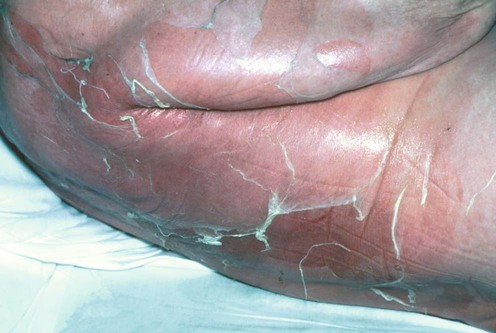Staphylococcal scalded skin syndrome

Specific Investigations
Isolating Staphylococcus aureus from children with suspected staphylococcal scalded skin syndrome is not clinically useful.
Ladhani S, Robbie S, Chapple DS, Joannou CL, Evans RW. Pediatr Infect Dis J 2003; 22: 284–6.
Failure to isolate ET-producing S. aureus from affected skin does not exclude the diagnosis of SSSS.









 β-Lactamase resistant penicillins, e.g., flucloxacillin, oxacillin
β-Lactamase resistant penicillins, e.g., flucloxacillin, oxacillin Glycopeptide antibiotic, e.g., vancomycin
Glycopeptide antibiotic, e.g., vancomycin Quinolones
Quinolones Tetracyclines
Tetracyclines Cephalosporins
Cephalosporins Aminoglycosides
Aminoglycosides Pooled human immuneglobulin
Pooled human immuneglobulin Fresh-frozen plasma
Fresh-frozen plasma Skin substitute dressings
Skin substitute dressings